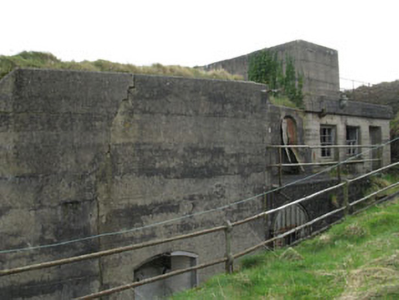Survey Data
Reg No
20909947
Rating
Regional
Categories of Special Interest
Architectural, Historical, Social, Technical
Previous Name
Camden Fort
Original Use
Battery
Date
1890 - 1930
Coordinates
180800, 61767
Date Recorded
12/03/2009
Date Updated
--/--/--
Description
Three-stage gun battery emplacement with bunkers, built c.1910, now disused. Reinforced flat concrete roofs having cast-iron railings. Three gun emplacements to upper level, having concrete pedestals with circular concrete artillery mountings. Square-headed storage recesses to pedestals having concrete steps to sides. Three-bay and multiple-bay bunkers to second-stage. Reinforced concrete walls throughout battery. Square-headed window openings with concrete sills, having six-over-six pane timber sliding sash windows. Square-headed door openings with recessed single and double-leaf timber panelled doors. Round-headed door opening giving access to underground bunker with reinforced cast-iron door. Camber-headed and square-headed recesses throughout. Subterranean structures to site, including caponier and munitions system. Located within military complex. Various related structures to site.
Appraisal
Forming a pair with Fort Davis (formerly Carlisle Fort) across the water, this pair was crucial to the harbour's defence. Mirroring each other in many ways, they were designed to operate as a single defensive unit and were contemporaneously updated and developed. The strategic importance of the harbour can be seen in the number of military buildings constructed throughout the centuries at this site, Fort Davis, Spike Island, Haulbowline, etc. Cork Harbour, along with Lough Swilly and Berehaven remained in British control until 1938, at which time the Treaty Ports were returned to the Irish government. The early use of mass concrete adds to the site's architectural and technical interest.











